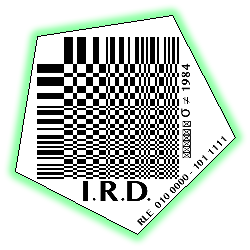Before mechanisms such as filtering, censorship and algorithmic bias dictate what images are rendered, disseminated, and ultimately seen (or left unseen), the image first needs to be captured.
What is captured depends on the scope of the technology, defined by factors such as frequency range, modality, or data type, which set a baseline for what is resolved.
Through tactical interventions, scope can be expanded to support alternative ecologies of visibility.
////////////////////////////
What is captured depends on the scope of the technology, defined by factors such as frequency range, modality, or data type, which set a baseline for what is resolved.
Through tactical interventions, scope can be expanded to support alternative ecologies of visibility.
////////////////////////////
Whiteout was created after joining the Armada de Chile on a research trip to Antarctica organised by Nicolas Spencer for Polar
it was also inspired by Axis research done with Mario de Vega and my time at ARTS COLLIDE Barcelona CERN
it was also inspired by Axis research done with Mario de Vega and my time at ARTS COLLIDE Barcelona CERN

Whiteout (2020)
0011 — SCOPE: EXPANDING SELECTIVE CAPTURE
Painfully aware that even the latest software and filter may be rooted in severely flawed protocol, the Angel chooses to explore a broader spectrum of noise and manipulation and mounts antennas in her eye sockets, to explore an expanded visual ecology and undo any type of bias.
A quest that ultimately leads her into a Whiteout: oversaturated with noise and devoid of resolution, the Angel is once again caught in a storm. Struggling to render anything, she loses a sense of direction amidst overwhelming distortion.
A quest that ultimately leads her into a Whiteout: oversaturated with noise and devoid of resolution, the Angel is once again caught in a storm. Struggling to render anything, she loses a sense of direction amidst overwhelming distortion.
Even though the generator is meant to give her back control over the frequencies of light, it only seems to emphasizes the limits of her vision, forcing her to consider that this space may require a different type of sensor; eyes that are larger, slower, or more sensitive to other frequencies of light.
Spectrum of Lost and Unnamed Colours (2024: Sound: Debit)
 Rainbow Generator (2024).
Rainbow Generator (2024). W/ Support of Herman Hermsen and So Kanno.
////////////////////////////
A Spectrum of Lost and Unnamed Colours
was commissioned and produced in the framework of EPFL - CDH Artist in Residence Program 2023, Enter the Hyper-Scientific
Partners: EPFL Center for Imaging, Edward Andò, CLIMACT Center for Climate Impact and Action UNIL & EPFL
Credits: Rosa Menkman
Support: Lotte Menkman
Curator & head of program: Giulia Bini







